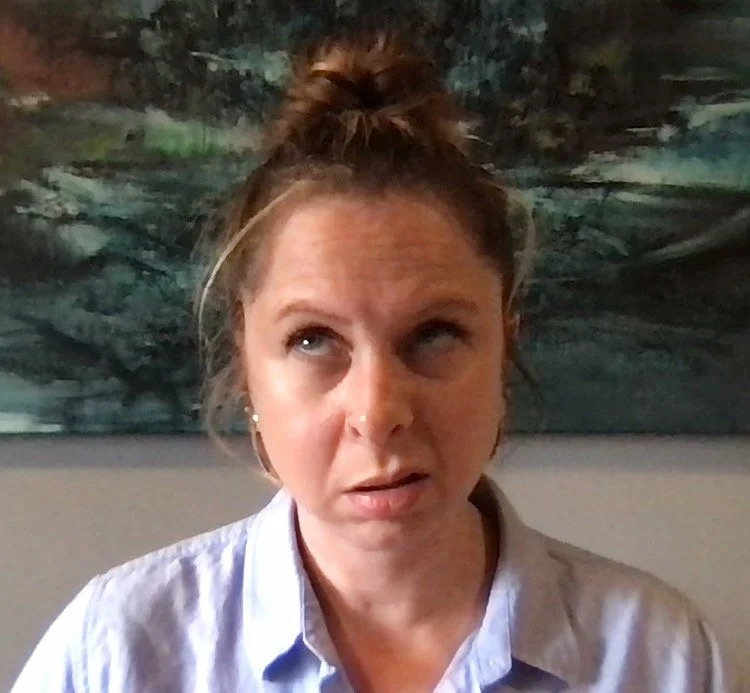DBT Philadelphia: Why you need to learn this DBT Skill
The Mindfulness “What” Skill of Describing: Philadelphia DBT Skills Training
Your mind is racing with constant worries, judgments, or replaying the fight you had with your spouse last night. You feel miserable. Whether you’re distracted by your current relationship problems, including why your partner isn’t texting you back to questioning the status of your marriage, our life’s problems take up a lot of real estate in our minds. The constant mind garbage and chatter pulls us away from being truly present in our lives.
DBT or Dialectical Behavior Therapy may have been recommended to you as a way for you to solve the problems in your life, such as the ones listed above. DBT Skills Training is part of standard outpatient DBT. In this series of blog posts, I’m focusing on DBT core mindfulness skills. If you missed any of these previous posts, you can check them out here, here, and here.
Core mindfulness skills include Wise Mind Skills, What Skills, and How Skills. Again, the Mindfulness “What” Skills are “what” you do when you practice mindfulness, and the “How” Skills are “how” you do it. Last week, I dug into the What Skill of Observing.
Today’s focus is all about the Core Mindfulness What Skill of Describing.
DBT Mindfulness Describe
Have you ever gotten yourself into trouble with someone because you accused them of feeling or thinking a certain way and later found out you were wrong? What about if you accused them of having a specific motive and then realized they didn’t?
I certainly have.
Describing is when you put words on, label, or “describe” something that you actually observe. This is the key.
You can’t observe someone else’s thoughts, feelings, emotions, or any other internal experience. No one can do this. Yet, we often think we can.
Again, I’m guilty of this as well.
I’ve also had the experience of someone telling me what I was thinking and feeling, and they were totally wrong. It felt annoying, irritating, and frustrating. I’m gonna guess this happened to you too.
No one likes to be told how they feel or what they’re thinking.
We cannot describe what we cannot observe.
Most people would agree with this, but we so often find ourselves doing that same thing. Here’s an example.
Describe my face in the picture.
I’m going to guess that many of you would say “anger”, “disgust”, or “annoyance”.
Many people will often make an inference, judgment, or assumption based on thinking they observed and described what I was feeling.
The fact is, you can’t observe and describe someone else’s thoughts, emotions, or internal experiences.
You just can’t. It’s impossible.
What you can say is, you noticed my eyes looking upward, my nose was scrunched up, and my upper lip was curled.
How many times have we all mistakenly described someone else’s motive, intention, thought or feeling?
Some of you may say, “but what if the person IS actually angry or annoyed?”
Well, you may be correct and you may not. There are many things plausible here. The fact is, is that there could be other answers as well.
In my photo above, it could be that I was feeling annoyed. It’s also possible that I was deep in thought or worried, or just making a silly face. The idea is, is that you don’t know.
DBT mindfulness describing is NOT giving opinions or judgments.
Some things tend to be easier to describe than others. For instance, it may be easier for you to factually put words and “descriptions” on things outside of ourselves, such as a tree, picture frame, or computer screen.
For instance, in the image here, you could use words like, “bird”, “red”, or “cardinal” to describe what you’re observing. On the other hand, you wouldn’t be practicing describing if you used words like, “pretty” or “the bird is resting”. The word, “pretty” is an opinion and not a fact. The words, “the bird is resting” would be an assumption or trying to label the bird’s intent, which is also not mindful describing. Again, it’s only what we can observe.
Mindful describing our own internal experiences can be difficult.
What gets in the way of DBT mindful describing of our own thoughts and feelings?
Practicing mindful describing of our own thoughts, feelings, and internal experiences is a difficult task. Facts and opinions, when mixed together in our minds, make things particularly tricky. Interpretations & perceptions of what we observe get in the way. Perceptions are judgments, which can lead us to incorrect assumptions. When we do this within our relationships, it can be a cause of unnecessary problems.
How NOT to use and how to EFFECTIVELY practice the DBT mindfulness skill of describe.
Here’s a common example.
Let’s say you’re out at a local bar with some friends and you’re having a fun time. You get up to go to the bar to order another drink and you spot another one of your friends across the room. You think it would be great for your friend to join the group at your table. When you wave and call your friend by name, your friend looks in your direction and then walks in the other direction. You think, “WTF? She just ignored me. I just knew she didn’t like me.”
Let’s break this down a bit. What are the facts? You saw your friend on the other side of the room. Your friend turned in your direction and then walked the other way. You had the thought that your friend ignored you.
The problem is, is that once you had the thought that your friend ignored you, you interpreted that thought as a fact, when in reality, a thought is only a thought. That interpretation of your thought is a judgment.
Thoughts & Feelings are not Facts
Being able to describe a thought, as a thought, is being able to identify that it is a thought and not a fact. Just as being able to identify a feeling, as a feeling, is being able to identify that it is a feeling and not a fact.
Describing helps us check the facts.
Mindful describing helps us differentiate between what is observed and what is not. It gives us the ability to identify a thought as just a thought, or a feeling as a feeling. Again, thoughts and feelings are not facts.
Why practice the DBT Core Mindfulness Skill of Describing?
Responding to a thought as a fact can cause more problems and emotional pain. When we describe, it helps us find out if our perception is accurate and allows for an opportunity to get feedback from others. Describing can also help us change behavior.
Being able to observe and describe our emotional experiences helps us to better regulate our emotions.
Philadelphia DBT Therapist
Practicing DBT Core Mindfulness Skills can help us find our inner peace and wisdom. If you’re struggling with your emotions taking over & controlling you, panic attacks or anxiety, or relationship problems, you don’t need to continue suffering. Dialectical Behavior Therapy can help you solve the problems in your life which are causing so much pain.
Looking for DBT in Philadelphia?
As a DBT therapist, I provide standard, outpatient, DBT. I help people, like you, who are desperate to be happy and build a life that’s worth living. I specialize in the treatment of borderline personality disorder, anxiety disorders, and trauma. My consultations for DBT therapy are free. You can book your own Philadelphia DBT consultation for BPD and anxiety therapy HERE or by calling 717-685-5074. Please don’t wait, reach out today.




